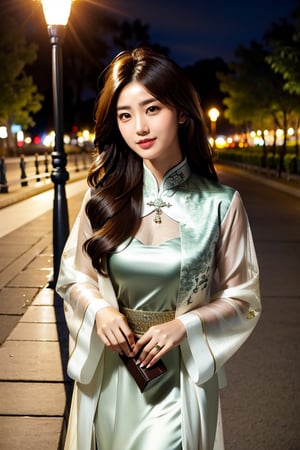The "Ao Dai" is a traditional Vietnamese garment that holds deep cultural significance and represents the elegance and grace of Vietnamese women. This iconic attire is a symbol of national pride, embodying the country's rich history and artistic heritage. The Ao Dai typically consists of a long, flowing tunic worn over wide-leg pants, creating a harmonious blend of modesty and sophistication.
Dating back to the 18th century, the Ao Dai has evolved over time, influenced by various dynasties and cultural shifts in Vietnam. Its modern form emerged in the 1930s and has since become a timeless fashion statement. The design features a high neckline, long sleeves, and a form-fitting silhouette that accentuates the wearer's curves while maintaining a sense of modesty. The tunic often reaches the floor, adding a touch of grace and femininity to the overall look.
Ao Dai fabrics vary, ranging from silk to more affordable materials, depending on the occasion and individual preferences. The choice of colors and patterns holds cultural significance, with red symbolizing good luck and prosperity, while pastel hues are favored for more casual events. Intricate embroidery and decorative motifs add a touch of artistry, showcasing the craftsmanship and attention to detail involved in creating each Ao Dai.
Worn on special occasions such as weddings, festivals, and cultural events, the Ao Dai transcends mere clothing and serves as a representation of Vietnamese identity and pride. Its popularity extends beyond formal events, with modern adaptations making it a fashionable choice for everyday wear. The Ao Dai has also gained international recognition, celebrated for its unique design and cultural significance, becoming a symbol of Vietnamese elegance and tradition on the global stage. In essence, the Ao Dai is a living testament to the enduring beauty of Vietnam's cultural heritage, capturing the essence of grace, tradition, and timeless style.








